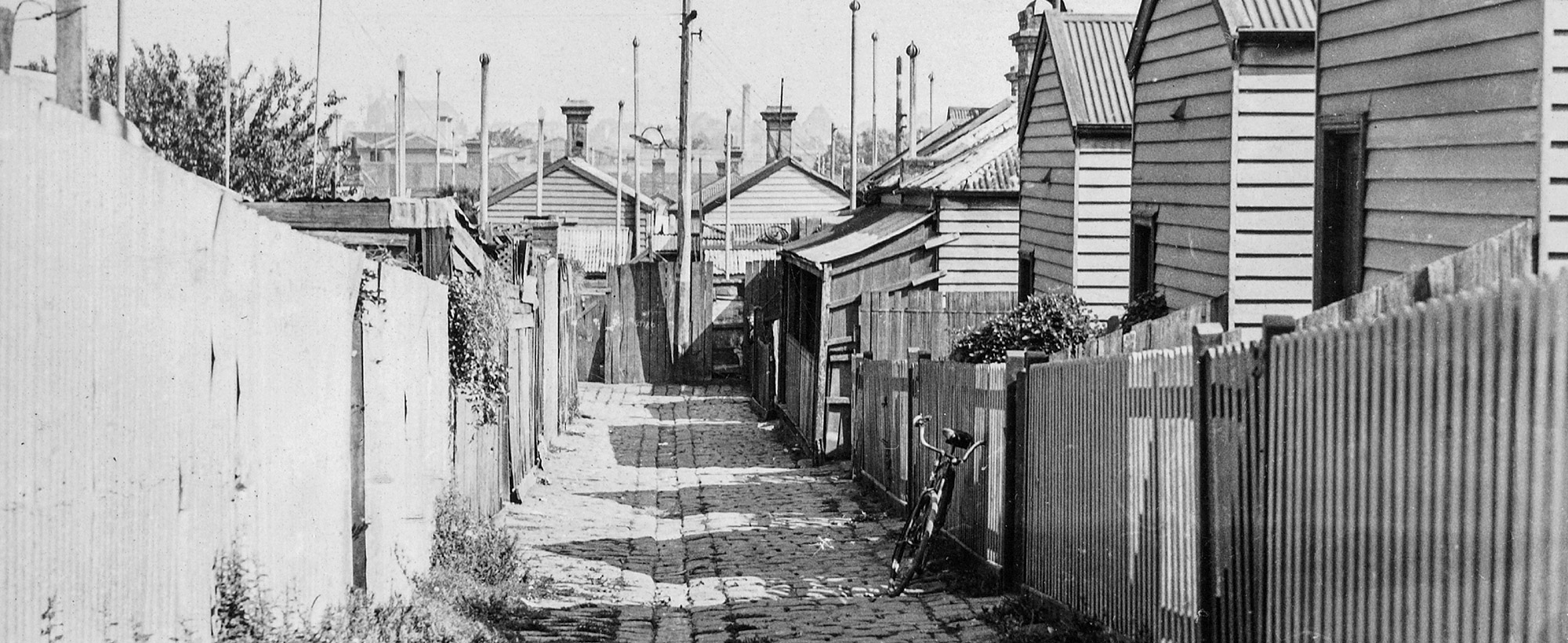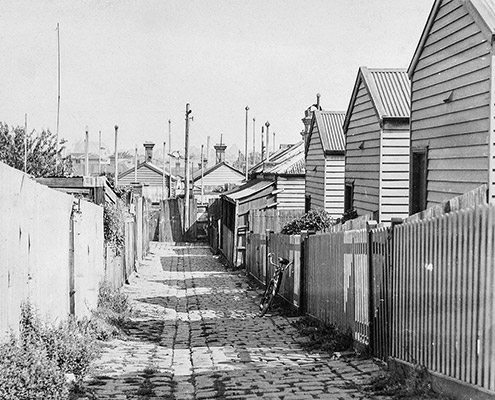


In late 2019, Lovell Chen was commissioned by the City of Melbourne to undertake a review of existing and potential heritage places in a defined study area of the Melbourne suburb of North Melbourne — in association with Extent Heritage. The work was completed in 2022.
The project reviewed all places within the study area, whether covered by a local Heritage Overlay (HO) or not, and excluding places included in the Victorian Heritage Register. This included residences, public buildings, commercial, manufacturing, ecclesiastical, educational places, and public squares and landscapes.
This was the first detailed heritage review undertaken in the study area since the 1980s. Lovell Chen reviewed the extent and nature of existing HO places, the heritage significance and values of the area, including the identification of additional places and values.
The review incorporated research, fieldwork, community and Traditional Owner engagement and assessment to review existing heritage controls and recommend new heritage controls for places within the study area. A thematic environmental history (TEH) was also prepared, documenting the development and evolution of the suburb, and how the culture of the area has impacted the natural and built environment. The TEH also elevates the histories and stories of Traditional Owner groups based on engagement as part of the project.
The study also addresses some specific questions that arose in the course of the work. These include: Do the existing Heritage Overlay places reflect contemporary heritage assessments and values? Are there additional individual places that should come under a Heritage Overlay? Is the extent of the area’s Heritage Overlay still appropriate? Are there places with Aboriginal values and associations?
Following research, fieldwork, consultation and assessments, a series of recommendations was made, including changes to property gradings within the large HO3 precinct, and additional heritage overlays.
North Melbourne has long been recognised for its nineteenth century heritage, and the review identified areas in the HO3 precinct that demonstrate particular built form characteristics, including residential and commercial areas.
As part of this review, Lovell Chen also identified the twentieth century as an important period for the suburb, characterised by demographic changes and slum clearance. A number of new twentieth century places were recognised as having heritage value, including interwar places within HO3, an avenue of early twentieth century street plantings, and Hotham Gardens, an unusual development of mid-century blocks of flats, which is recommended for a new heritage overlay.
The study area includes the majority of the suburb of North Melbourne, and generally incorporates properties and land located west of Capel Street; north of Victoria Street; south of Flemington Road; and east of sections of Dryburgh, Shiel and Melrose streets and Boundary Road.
The project team acknowledges the contributions of the following Traditional Owner organisations, their Elders, members and staff: Wurundjeri Woi-wurrung Cultural Heritage Aboriginal Corporation, Bunurong Land Council Aboriginal Corporation and Boon Wurrung Foundation.
headline photo : Canning Place, 1935, by Oswald Barnett, courtesy State Library of Victoria
first two images : Hotham Gardens housing and Plane Tree Way, by Lovell Chen
aerial : Wide streets, 1969, courtesy State Library of Victoria
Saints Peter and Paul Ukrainian Catholic Cathedral (consecrated 1967), Wikimedia Commons
Errol Street, 1964, by K.J. Halla, courtesy State Library of Victoria
last image : street view 1935, courtesy State Library of Victoria
More heritage studies all projects >
